Article & Photos by Josh Lane, BirdLanguage.com Staff Writer
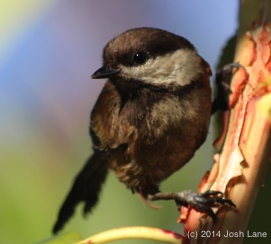 In learning bird identification and bird language, we seek to understand more about each bird’s unique lifestyle and biology. By looking at a bird’s biology, we gain insights into that species’ approach to life and the quest for survival.
In learning bird identification and bird language, we seek to understand more about each bird’s unique lifestyle and biology. By looking at a bird’s biology, we gain insights into that species’ approach to life and the quest for survival.
Adapted to Survive
Birds display an amazing variety of unique survival adaptations around the world, particularly in the wide assortment of bill shape and usage. When looking at a bird on the feeder or in the yard, notice the size and shape of the bill. This important field mark will help you narrow down the possibilities when looking up the bird in a field guide.
Beyond identification, bill shape can tell us a lot about a bird’s diet and role in the larger ecology of the landscape. This important structure also helps a bird to preen, build nests, and even provides defense against danger; all of these factors and more can play a role in the unique bill adaptations of each species. In this article, we will focus on the relationship of the bill to food usage, and general patterns in bill shape that can help birders to gain more insight into the lives and survival concerns of the birds in the back yard.
Below, we will look at a few common types of bill structures and the types of foods these bills are generally thought to be adapted for.
What’s On the Menu?
Types of Bird Bills and their Uses in Food Specialization
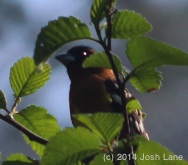 Any given bird species may eat a variety of foods as they are available. Each season and local landscape presents unique feeding opportunities. Though a bird may fall into one of the general categories below for primary foods based on its beak shape, it’s diet may vary (and often does in many cases) to include foods of other categories.
Any given bird species may eat a variety of foods as they are available. Each season and local landscape presents unique feeding opportunities. Though a bird may fall into one of the general categories below for primary foods based on its beak shape, it’s diet may vary (and often does in many cases) to include foods of other categories.
Insectivores –
Many insect eaters have bills that are fairly slender. They deftly use their bills to glean insects from bark crevices or leaves. Warblers and many other passerines fit into this category.
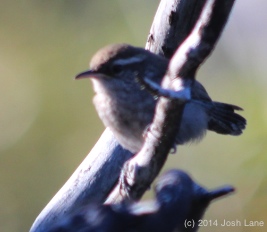
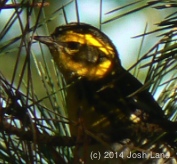 Photos Left: The Bewick’s wren uses its thin curved beak to cull spiders and insects. The Townsend’s warbler is adept at gleaning insects from tree branches.
Photos Left: The Bewick’s wren uses its thin curved beak to cull spiders and insects. The Townsend’s warbler is adept at gleaning insects from tree branches.

Photo: The American robin regularly scours the ground for earthworms and other foods; the robin’s bill does double duty as the bird switches to a frugivore lifestyle in the autumn, dining on wild fruits as available.
Grosbeaks, finches and other seed eating specialists tend to have conical beaks. These wide-based, leverageable beaks can more easily break open the husks of seeds and nuts.
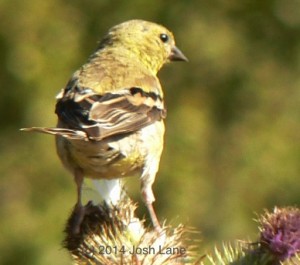
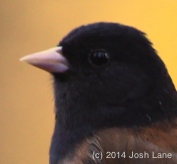
Photos Left: A goldfinch perches atop the bird’s favored food, the thistle. The Oregon junco eats a wide variety of seeds, though nestlings eat solely insects.
A black-headed grosbeak takes a high perch in an alder tree in a riparian corridor.
Generalists –
Jays and other birds that eat a wide variety of food of both plant and animal origin have sturdy beaks that serve a variety of purposes.

Photo Left: A scrub jay poses at the edge of a eucalyptus stand along the California coast. A jay’s diverse diet includes insects, fruit, acorns, eggs, and even nestlings and fledgling birds. The jay’s beak is also suited to gather and build a nest of twigs and fine rootlets.
Raptors/Meat Eaters –
Hawks and other raptors must pull apart meat in order to feed. The hooked beak of a red-tailed hawk helps the bird to tear through an animal’s tough outer hide.
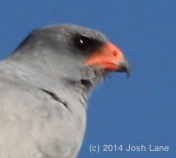
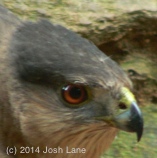
Photos Left: A pale chanting goshawk eyes a flock of sand grouse nearby a waterhole in Botswana. A Cooper’s hawk crouches over a chicken caught near the author’s house. Note the strong curved bills that these raptors from two different continents share.
Other Bill Types –
There are a variety of other specially adapted bill shapes in the bird world, from the serrated bill margins used by birds that catch fish, to the the chisel-like bills of woodpeckers, all the way to the long thin bills of hummingbirds and other nectar feeders.

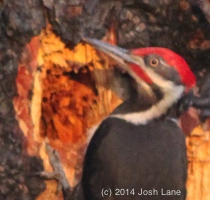 Remember that there are other functions besides food gathering that may affect bill shape; however the patterns listed above are useful interpretive tools for looking more deeply into a bird’s natural history.
Remember that there are other functions besides food gathering that may affect bill shape; however the patterns listed above are useful interpretive tools for looking more deeply into a bird’s natural history.
Bird Bills, Ecology and Bird Guilds
Have you ever encountered a group of birds feeding together, drifting like a hungry cloud through the forest? These “feeding flocks” may consist of a variety a species that are not directly related, though they may be eating similar types of foods.
 Some guilds specialize in searching for insects in the mid-canopy; in such a group one may encounter chickadees, nuthatches, kinglets and other birds. Other guilds may unite insectivores that focus on the forest floor, or other unique resources like nectar or seed sources. Competition may be limited as guild members may focus on different types of foods that are found in similar habitats, and bill sizes within a guild may differ to reflect this.
Some guilds specialize in searching for insects in the mid-canopy; in such a group one may encounter chickadees, nuthatches, kinglets and other birds. Other guilds may unite insectivores that focus on the forest floor, or other unique resources like nectar or seed sources. Competition may be limited as guild members may focus on different types of foods that are found in similar habitats, and bill sizes within a guild may differ to reflect this.
You’ll hear a variety of calls as the birds in these flocks feed and move along together in a loose formation. In deeper forest patches that have a generally quieter baseline during the day, areas hosting a feeding flock will stand out noticeably due to these contact calls.
By feeding together in these loose associations, flock members may also benefit by gaining early warning of approaching danger from other guild members. These clumps of feeding birds are natural attractors for opportunists such as sharp shinned hawks, so keep an ear out for an sudden silences or the high-pitched ventriloquial general alarm calls used by many species to indicate the close and sudden appearance of an accipiter.
References:
“Antipredator Calls of Tufted Titmice and Interspecific Transfer of Encoded Threat Information,” by Stacia A. Hetrick and Kathryn Sieving. Behavioral Ecology, January-February 2012.
The Birder’s Handbook: A Field Guide to the Natural History of North American Species. Paul Ehrlich, David Dobkin, Darryl Wheye. Simon & Schuster, Fireside, 1988.
Manual of Ornithology: Avian Structure and Function. Noble Proctor and Patrick Lynch. Yale University Press, 1993.
Photos & Text (c) 2014 Josh Lane
About the Author:
 Josh Lane is an avid wildlife tracker and bird language observer. He contributed to the “How to Learn Bird Language” section of the book, What the Robin Knows, and developed the Backyard Bird Language online course. Josh is a nature connection mentor with 8 Shields in Northern California, and has presented bird language trainings at events around North America, including the 2013 National Audubon Conference.
Josh Lane is an avid wildlife tracker and bird language observer. He contributed to the “How to Learn Bird Language” section of the book, What the Robin Knows, and developed the Backyard Bird Language online course. Josh is a nature connection mentor with 8 Shields in Northern California, and has presented bird language trainings at events around North America, including the 2013 National Audubon Conference.
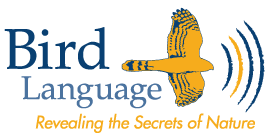
Great article – and the tip in the newsletter on keeping a journal on one species is very cool! I started one on House Wrens this eve as they are very common where I live and work!